Building SO Much More Than a 3D Community
About a month ago, I posed this big question to my students: “Qu’est-ce qu’une bonne communauté?” (or “What makes a good community?”). Discussions and research in form of reading books followed to determine what in fact was a community. We then took several walks, taking pictures of our surroundings while noticing what details were included in our community. During our walks, we also visited three local businesses to learn a bit more about what types of services they provide to our community. We visited The Crusty Bun, Unity Massage, and Images Dental Centre. We gathered all of our research and then we created a web of ideas in order to try and answer our initial question. Furthermore, we complied the pictures that we took during our walks and business visits in order to make a short video that we shared with the two other grade 1 classes in our school. The other two classes did the same, so while we viewed their videos, we learned about other businesses: Sunova Credit Union, Dakota Veterinary Hospital, Family Foods, Village Optical, and Papa John’s Pizza. Finally, we used Google Earth in order to look at all of the students’ houses and apartments and also to examined what was close to their homes. After learning from our friends and checking out Google Earth, we added to our brainstorm web. Next, we started planning!
First, we had to determine what businesses we thought would be important to include in our community. We wanted each student to build a business as well as their home, so we had to narrow down our choices to 17 businesses (and really, I used the term businesses, but they’re not all businesses, we chose to include a school, for instance). Once that was done, the students decided which business they were going to be in charge of creating. It was also decided that the students would build a mini replica of their house/apartment bloc at home with the help of their parents. Once those decisions were made, we started drawing out the streets, but even this took several tries as windy roads weren’t efficient (check out our first attempts on the right of the picture below). We pulled up Google Maps to see what roads typically look like from a bird’s eye view and used our research to guide our next attempts. The students also decided that we should have a river running through our community, which brought on the discussion of bridges, and how many it would be appropriate to have in our community (again altering our road map). Then, with the roads and river planned out, it was time to place our houses/apartment blocs and our businesses on our plan. This was the stage where critical thinking and good communication really came into play. The students had to decide among themselves where everything was going to go. Comments such as “houses are usually in the same area” and “maybe we should put a restaurant over here by the stores so the people who work here can go there to have lunch” and “I think the hospital should be right next to the doctor’s office, that way you don’t have far to go if you’re really sick” were made. Great discussions were had and the planning came together. Once their plan was complete, I tweaked it a bit based on the dimensions of the base and transferred it there. (Note: next time I do this project, I plan to collaborate with a higher grade class who could do this scaling for us, but I thought of it too late this time!). Then, the building began…

The first task to tackle was making the roads. So much discussion went into this piece alone for several reasons. First, the students had to decide what way would be the best way to build these roads. Ideas included colouring with a marker, painting, and using paper. After a vote, they decided to use paper. The students then decided that the roads should all be the same width. They didn’t want everyone doing their own thing and then coming together to roads that weren’t a consistent size. So, brainstorming and sharing ideas continued until they agreed on folding a paper in a half, and then folding it in half again in order to make 3 lines that separated the paper in 4 same sized strips! Brilliant! They all started doing that and within a few minutes, we had roads everywhere! They applied the same type of strategy to make the little yellow lines that they wanted in the middle of their roads. And voilà, within 30 minutes, we had roads all through our community!
Next, I cut our board into 5 sections so that it would be easier for the students to work around the pieces that included their business or house. Before we continued building, we decided to make three lists of things that our community should include. Our three lists were for the “houses lots”, “business lots” and “the general community”. We took ideas from our brainstorming web and placed them in these three categories. Organizing our ideas helped guide the students in what their lots could include. Ideas were grass, driveway, trampoline, garden, parking lot, flowers, name of the business, stop signs, traffic lights, people, cars, bikes, etc. Once our lists were done, we gathered our supplies and headed to the art room. The students had free range of supplies and could use what they thought would help them create their two lots. The houses arrived to school already built, but they built the businesses from scratch at school. They then had to place their two buildings on their appropriate lots and make sure that they finished the yard or other space that was theirs. They collaborated with one another to see what worked best and how to solve certain problems that they encountered. They helped one another and made sure that they were all on track. Once their lots were complete, they had the opportunity to look at “the general community” list and create and add accordingly to our community. It was pretty spectacular as all this came together!


My students had their completed 3D community, along with a video of their learning, on display at the Celebration of Innovations in Citizenship that the Louis Riel School Division held last week. During this time, we invited our guests to tweet us their questions, comments and feedback so that we could answer. We even ended up connecting with another class in North Carolina who is in the process of doing a similar project and we have plans to Hangout with them in order to share our knowledge (since we are now the experts!). It was such a special day for my students as they really got to showcase their learning and share their knowledge with our very own community. We even sent out an invitation to the local businesses that we visited so that they could see what they helped us create! 🙂


Many things struck me during this whole process. First and foremost, ALL of the students were engaged in all activities! It didn’t matter if we were researching, brainstorming, collaborating or creating, everyone was on task and so excited! Their pride exuded and although the project took many hours of our days, they never got tired of it! In all of this, so much learning happened, but I bet you the students didn’t even realize it! So many soft skills and 21st century skill were developed on top of covering the curriculum. Furthermore, because the students were so engaged in this process, the learning that happened was much deeper! All this because they were in charge of their learning!
As I reflect on this process, I am reminded just how rich a learning experience like this can be. I am so unbelievably proud of my students for all that this 3D community represents. So much learning has gone into it and the final product is so impressive (the pictures don’t do it justice). Even more amazing than the final product though, is the journey that the students took to get there. The process was so rich and that is the true reason why I am so proud.
Ps – the project isn’t even done yet – the students are still super into this, so we are going to continue and turn our 3D community into a virtual one, Minecraft style! So exciting!

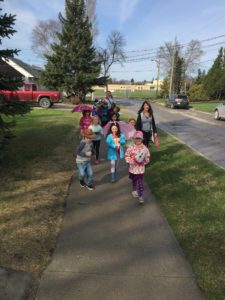
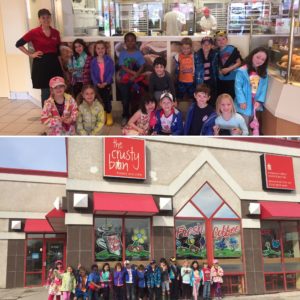

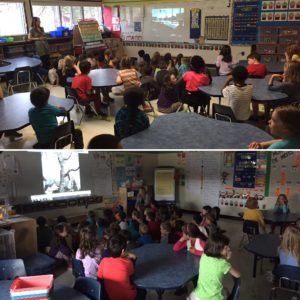

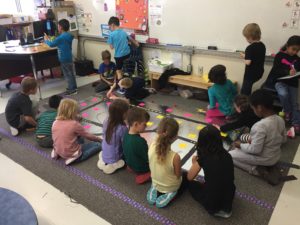
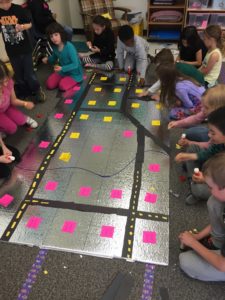
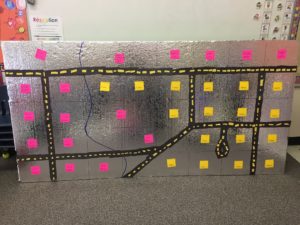
Creating Authentic Learning Experiences at Home – KATIE MARTIN
March 17, 2020 at 5:52 pm[…] love this project from elementary teacher Annick Rauch. She took her students on a walk in their community to notice, […]